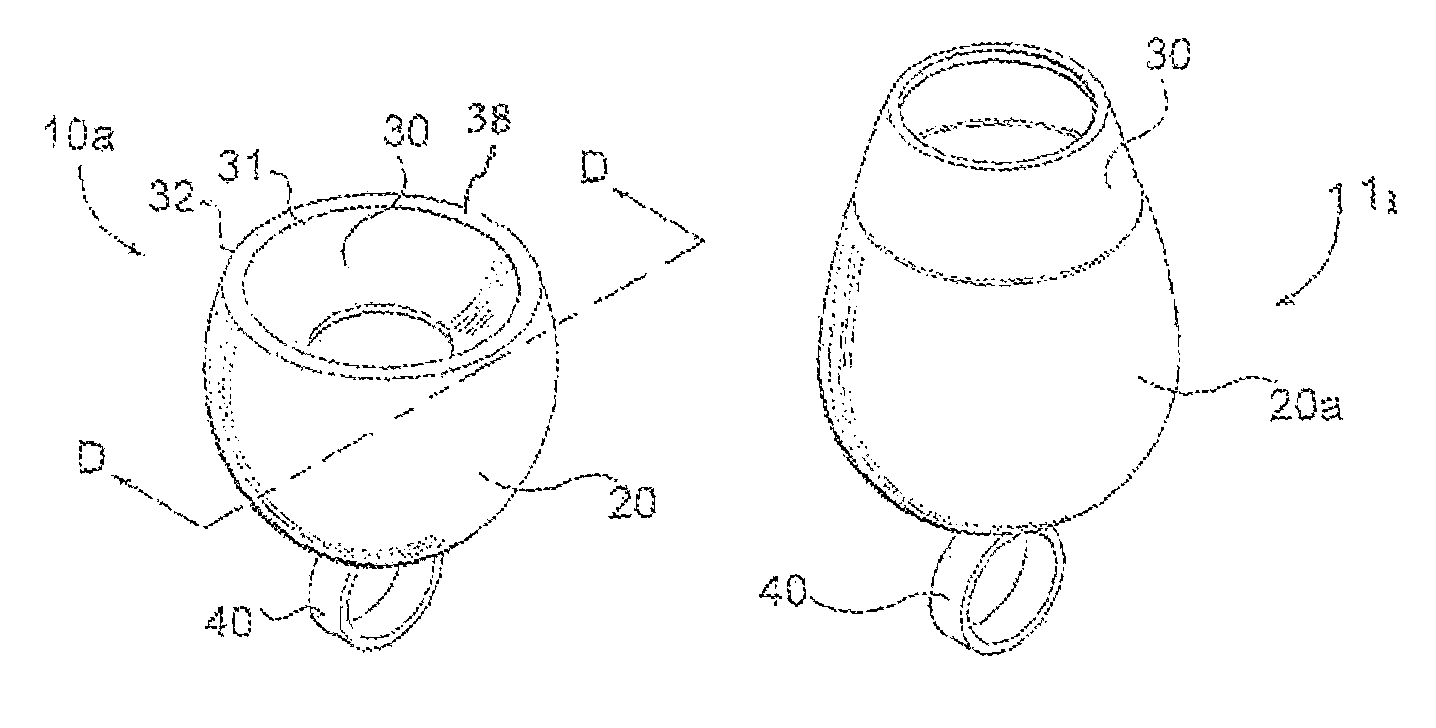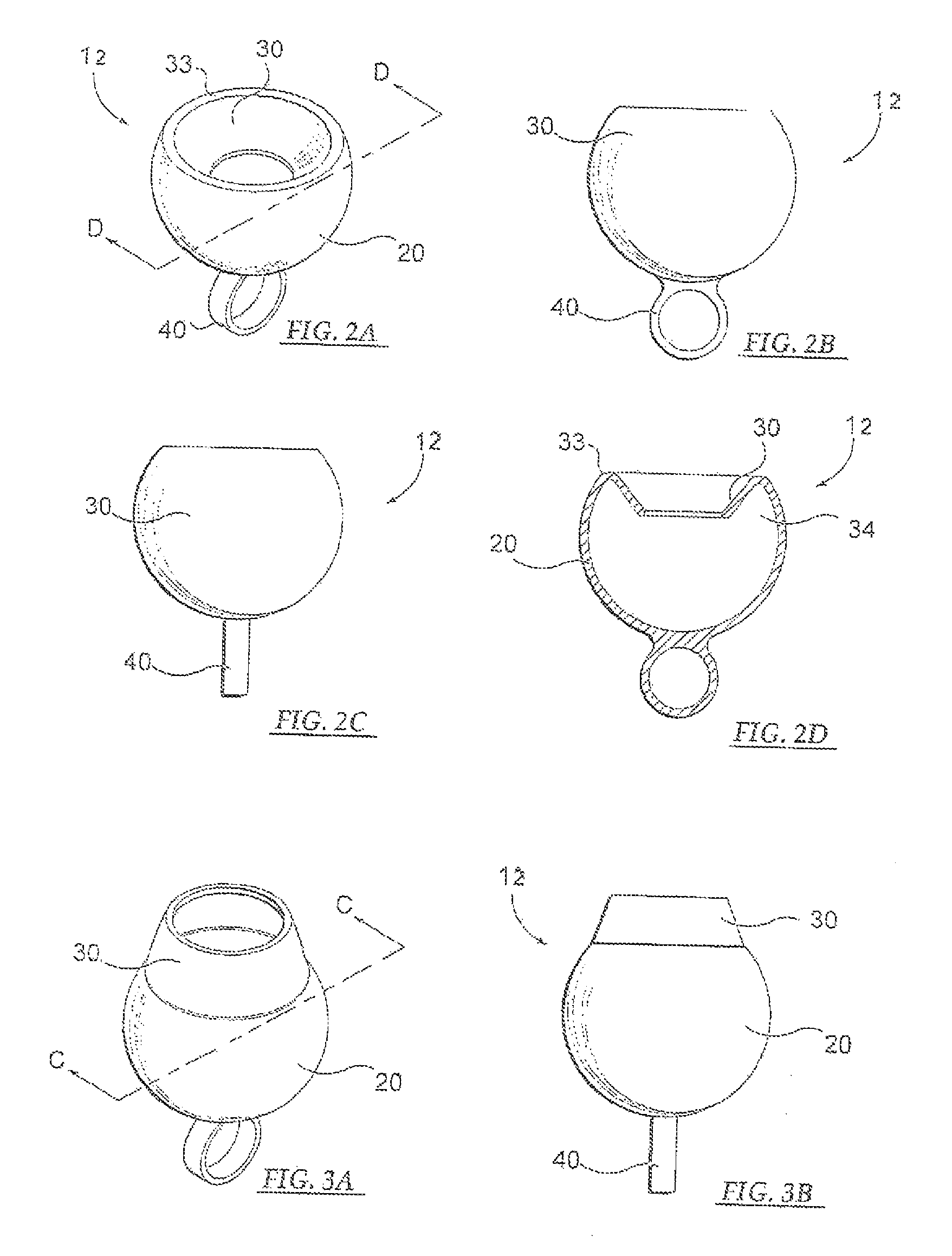Device and method for menstrual blood collection
a menstrual and blood collection technology, applied in the field of obstetricalgynecological devices, can solve the problems of not being able to completely prevent the leakage of blood from the vaginal orifice, etc., to achieve the variability of smoothness of the vaginal walls
- Summary
- Abstract
- Description
- Claims
- Application Information
AI Technical Summary
Benefits of technology
Problems solved by technology
Method used
Image
Examples
Embodiment Construction
[0044]With regard to FIG. 1, an overview of a first preferred menstrual fluid receptacle 10 is illustrated. Initially, the receptacle 10 is compressed during insertion. The receptacle 10 further has a resilience for restoring to its original shape after being inserted into the vagina 93 wherein a user's cervix 91 and uterus 92 are shown for illustrative purposes. Also importantly, the compressible hemispherical device 10 has a remarkable adaptability to anatomical size, shape, contour of the vagina 93, to maintain its outer surface in close contact with the vaginal 93 walls and offer a sealing closure to blood in any condition. In position (FIG. 1) the device 10 applies a gentle pressure upon the vaginal 93 walls and adds no discomfort to the female user. Further, the pressure exerted is just barely sufficient to prevent passage of blood between the device 10 and the vaginal 93 walls, such a pressure being generally proportional to the negligible pressure, exerted by menstrual blood...
PUM
 Login to View More
Login to View More Abstract
Description
Claims
Application Information
 Login to View More
Login to View More - R&D
- Intellectual Property
- Life Sciences
- Materials
- Tech Scout
- Unparalleled Data Quality
- Higher Quality Content
- 60% Fewer Hallucinations
Browse by: Latest US Patents, China's latest patents, Technical Efficacy Thesaurus, Application Domain, Technology Topic, Popular Technical Reports.
© 2025 PatSnap. All rights reserved.Legal|Privacy policy|Modern Slavery Act Transparency Statement|Sitemap|About US| Contact US: help@patsnap.com



